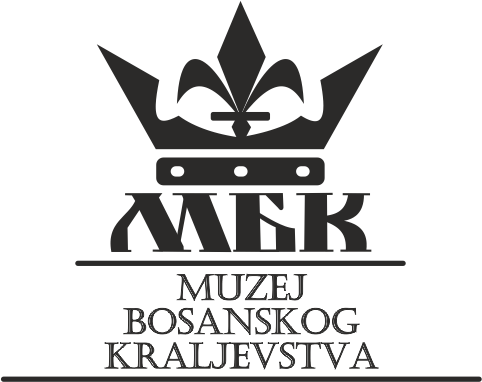THE MUSEUM OF THE BOSNIAN KINGDOM, has opened its first exhibition on 30 July 2022, entitled “Charter of Bosnian Rulers and Nobles (1189-1461)” by Dr. Enes Dedić. The exhibition covers the time period from 1189 to 1461 and follows the transformation of Banate into the Kingdom of Bosnia through the charters of its rulers and nobles, written in Bosnia. The exhibition includes: Charter of Ban Kulin to the Ragusans, 1189, Charter of Ban Stjepan II Kotromanić to the Ragusans on the cession of Ston and Pelješac, 1333, Charter of Ban Tvrtko Kotromanić confirming the privileges of his predecessors to the Ragusans, 1367, Charter of King Tvrtko I to the Ragusans in 1378, Charter of the Prince Pavle Radinović to the Ragusans, 1397, Charter of King Tvrtko I on the abolition of the square for the sale of salt in the county of Dračevica, 1382, Charter of King Ostoja to the Ragusans on the cession of the Primorje, 1399, Charter of Duke Sandalj and his brothers Vukac and Vuk ceding their part of Konavale to the Ragusans , 1419, Charter of King Stjepan Tomaš to the Ragusans confirming the charters of his predecessors, 1444, Charter of King Stjepan Tomašević to Ragusa, 1461. The exhibition is permanently installed at the fortress Ostrožac on Una in Cazin, but it will also travel throughout Bosnia and Herzegovina and the world. We are witnessing the importance of inheriting one’s own culture and history, in order to build a modern society on the foundation of today’s values and identity through history. We are delighted to present you with the exhibition “Charters of Bosnian Rulers and Nobles (1189-1461)”, which is undeniably a fact, a testament to the time and circumstances of society and people. Fortunately, these documents have been preserved in European archives, allowing us to interpret them today, to learn from them, and to preserve them as a legacy so that future generations can be educated about Bosnia’s age-old values. With the opening of the exhibition “Charters of Bosnian Rulers and Nobles (1189-1461)” by Dr. Enes Dedić, the Museum of the Bosnian Kingdom is open to the public. From today onward, visitors can visit the exhibition at the fortress Ostrožac on Una in Cazin, as well as access the website www.muzejbosanskogkraljevstva.ba, which contains an abundance of historical information about the medieval Bosnian state.
“I am very happy that we had the opportunity to present our work and the exhibition “Charters of Bosnian Rulers and Nobles”. We are only at the beginning of a long journey. We have a lot of work ahead of us, and our enthusiasm for pushing forward is even greater. After extensive effort and work, we have now received feedback. Our initiative has been received very well by the public, and this was our intention, to bring history closer to the general public, as a means of bridging the gap between scientific research and people. Today, you have the opportunity to read what is written in one of the aforementioned charters and come to your own conclusions without an intermediary and create your own attitude about it,” said Adnan Hajrulahović, head of the Museum of the Bosnian Kingdom.
“The charters of Bosnian rulers and nobles of the Middle Ages are one of the most significant aspects of the cultural heritage of today’s Bosnia and Herzegovina. Their importance from today’s perspective is manifold. These documents offer a wide range of information about a past era and state. These documents highlight all the elements of Bosnian statehood at that time, including its political, economic, and cultural systems. Some charters are more substantial, significant, and solemn than others, and some have become extremely well known to the public, while others have been totally neglected. Their common characteristic is that they are the voices of Bosnian bans, kings, nobles, that is, the Bosnian people of the Middle Ages. As only a small fraction of the total number of created charters were preserved during the five centuries of Bosnian state existence, it is imperative that the letters, words, sentences, and messages that survived until today be respected, interpreted and correctly understood. The documents of the Bosnian chancery were written in the Old Slavic language, which was also called the Bosnian language by neighbors at the time. The Cyrillic script of Bosnian charters shows distinctive peculiarities characteristic of Bosnian chancery, nevertheless, in terms of modern social norms, there is a serious issue with its perception. Charters written in Latin reflect Bosnia’s strong incorporation into the unique feudal European cultural matrix. In order to understand Bosnia and Herzegovina’s history, heritage, and elements of identity, it is a necessity to bring these written words close to our present and future generations.”- Dr. Dedić said at the opening of the exhibition.
“I am happy that we had the opportunity to support an excellent idea and be part of such a significant project for Bosnia and Herzegovina. I think that the area of the Old Town of Ostrožac, with all its potential, is the right place for such a project of nurturing Bosnian history and that the Museum of the Bosnian Kingdom will be of great use. We must really build, deepen and, of course, be proud of our relationship with our homeland and the enviable continuity of Bosnia’s statehood.” – said the mayor of Cazin, M.Sc. Nermin Ogrešević at the opening of the exhibition.
Photo: Elman Omić
